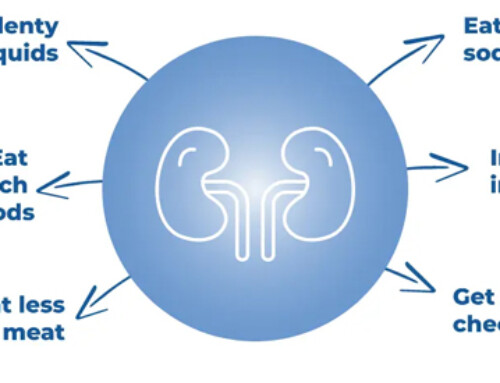Table of Contents
Why Calculate Creatinine Clearance?
Creatinine clearance is an estimate of Glomerular Filtration Rate (GFR). It is a useful estimate of GFR because:
- Creatinine is produced by the body in relatively stable amounts
- Creatinine is eliminated by the kidneys. The majority of this renal clearance is by glomerular filtration, a small amount is eliminated by tubular secretion.
The GFR is normally estimated by the serum creatinine using an estimating equation. https://bcnephro.com/creatinine-cystatin-c-and-gfr/
However, there are situations where this creatinine based estimating equation may not be accurate. These are situations where creatinine generation is higher or lower than typical including:
- Extremes of muscle mass
- High animal protein or vegetarian diet
- Paraplegia/ quadriplegia
- Liver disease
- Frailty
In these situations it may be useful to use another way to estimate GFR. Hence Creatinine Clearance.
What is the Creatinine Clearance?
Clearance is the removal of a substance over a given period of time. In this case it is the removal of creatinine from the blood, most commonly measured over a 24 hour period.
It is calculated by the formula:
This is:
Why Know How to Calculate the Creatinine Clearance?
It is possible to order a creatinine clearance and the lab will calculate the result. So why bother knowing the calculation? I believe it is important to know how to calculate the creatinine clearance for the following reasons:
- To know what lab results are necessary for the calculation.
- To confirm the result reported by the lab.
- To calculate the creatinine clearance if the lab does not calculate it, but only gives you the individual results
- To calculate the creatinine clearance if the lab uses assumptions that are not true (such as the urine collection being more or less than 24 hrs)
What you need
In standard situations a 24 hour urine is collected for:
- Creatinine concentration (U – Urine concentration)
- Volume (V – Urine Volume)
Blood is measures for:
- Creatinine (P – Plasma concentration)
Now we have the components of the equation:
This calculation is accurate when the plasma creatinine is in steady state, that is stable. It will not be accurate if the creatinine is rapidly changing as in Acute Kidney Injury (AKI).
Calculating the Creatinine Clearance
- U – Urine creatinine concentration. Reported in milligrams per deciliter (mg/dl)
- V – Urine volume. Reported in milliliters (ml ) or liters (L)
- P – Plasma creatinine. Reported in milligrams per deciliter (mg/dl)
- 24 hours
GFR is reported in milliliters per minute (ml/min). We will need to convert creatinine clearance to ml/min to estimate GFR.
For our example:
Urine concentration = 75 mg/dl
Urine Volume = 1500 ml
Serum creatinine = 1/50 mg/dl
Steps
- Calculate the total 24 hour urine creatinine (in milligrams). If the lab does this for you, skip to step 2.
- U V (Urine creatinine concentration mg/dl Urine Volume ml)
- As there are 100 dl in 1 ml divide the urine volume (in ml) by 100 for this calculation
- Example:
Urine concentration 75 mg/dl
Urine volume 2000 ml = 20 dl
75 20dl = 1500 mg
24 hour urine creatinine 1500 mg
- Divide 24 hour urine creatinine by serum creatinine
- Example:
= 1000 dl/ 24 hrs
- Change dl to ml and 24 hours to minutes
- Multiply by 100 (100 ml = 1 dl)
- Divide by 1440 (1440 minutes = 24 hours)
- Example:
= 69.4 ml/ minute
Shortcut
For a 24 hour specimen we end up multiplying by 100 and dividing by 1440
= 0.69
- Take the 24 hour urine total creatinine
- Divide by serum creatinine
- Multiply result by 0.69
Tips
- How do you know if the 24 hour urine collection was accurate, that is not an under or overcollection?
Creatinine generation is based on muscle mass.
This is typically constant in a given person from day to day, but varies between people.
Normal range for 24 hour urine creatinine 15-25 mg/kg.
- How to calculate the creatinine clearance if the urine collection was not 24 hours.
Substitute the number of minutes of the actual collection for 1440 in the calculation.
Example: Urine collection 44 hours. Substitute 2640 minutes
= 37.9 ml/ minute
Creatinine Clearance in Hemodialysis
Creatinine clearance can be performed in patients on maintenance dialysis to assess residual kidney function. Dialysis Rounding Primer Acute Kidney Injury | BCNephro
In these cases the urine collection is typically done over the interdialytic interval. For a patient with a 4 hour dialysis treatment, the interdialytic interval would be 44 hrs (as opposed to 24).
As per example above we would substitute 2640 (44 hrs) for 1440 (24 hrs) in our calculation
For patients on hemodialysis the plasma creatinine is not in steady state. The creatinine will be highest immediately before and lowest immediately after the hemodialysis session. To correct for this both a pre and post dialysis creatinine can be measured. These can be averaged to give a more accurate estimate.
I prefer to use the higher (pre hemodialysis) creatinine for 2 reasons
- The creatinine clearance is already an overestimate of GFR because of tubular secretion
- When considering decreasing or discontinuing dialysis I prefer to be conservative and use the worst case estimate (the higher plasma creatinine)
Summary
The creatinine clearance can be used as an alternative to estimate or confirm glomerular filtration rate. Although it may be reported by the lab, understanding the calculation is important. This may be necessary to confirm the lab results or perform the calculation when the collection is not 24 hours.



